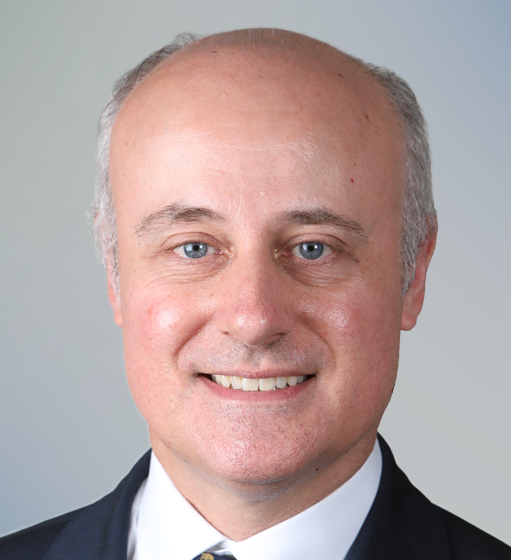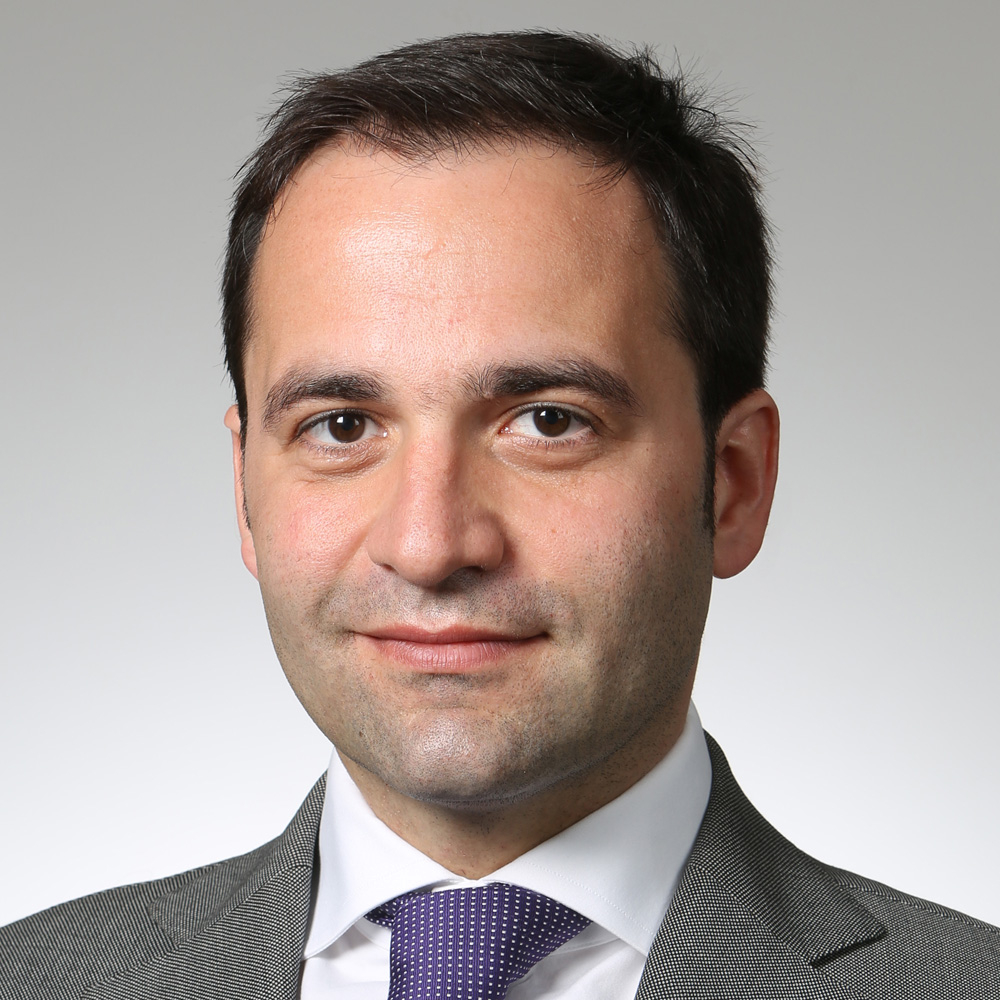Kalin Anev Janse in interview with Börsen-Zeitung
Kalin Anev Janse, ESM Secretary General
Interview with Börsen-Zeitung (Germany)
Published on 15 December 2017
Interviewer: Kai Johannsen
Börsen-Zeitung: Mr. Anev Janse, what will the refinancing volume be for the European Stability Mechanism ESM and the EFSF (European Financial Stability Facility) rescue funds in 2018?
Kalin Anev Janse: Overall, we will raise 51 billion euros through both institutions. It will be €23 billion through the ESM, and €28 billion through the EFSF.
What is the funding volume for the two institutions this year, and how are you proceeding? What is the current outstanding bond volume and what is the number of bonds that has been issued?
We completed this year's funding programme on 14t November. In total, we raised €60.5 billion this year: €49 billion for the EFSF, and €11.5 billion for the ESM. This was the second largest funding volume we ever realized. The only year that we issued more was in 2013, at the height of the euro area sovereign debt crisis. At the end of this year, the outstanding bond volume at the EFSF is €201.5 billion, while the ESM has a total of €76 billion in bonds outstanding. So we’re roughly at €300 billion in bonds in total in the market. Over the lifetime of the two institutions, we have issued some 70 benchmark bonds. At the moment, 66 of those are still outstanding in the market.
In October, the ESM made its debut issue in the dollar market. With a volume of $3 billion and a very good investor response, it was a very successful transaction. What's next? What were your experiences with the deal, what conclusions did you draw from the transaction?
You are right, it was a very successful transaction for us. We were very pleased with the confidence of investors. We reached 130 investors, which resulted in an order book of some $7 billion. Most importantly, we were able to add a significant number of new investor names. We had announced from the outset that the volume would be $3 billion, so we stuck to that. We picked a maturity of five years. The deal served two goals. We wanted to reduce the funding liquidity risk, and so we introduced a second currency on our funding side. In addition to the euro, we also wanted to create access to the dollar market. The second target was the diversification of our investor base. So, the deal had a strategic aspect, but the terms were also attractive. We were able to combine that very nicely. We achieved all our goals with the transaction.
What is the investor base like?
When you compare our investor base in the euro market, it is obvious that we’ve reached many investors in the US, UK and Switzerland with the dollar deal. You’ll find relatively fewer euro area investors. So we’ve been able to significantly diversify our investor base with the dollar deal. For example, 31% of the investors came from the Americas. That also means we’ve been able to attract new investments to the euro area.
How often do you want to access the dollar market next year?
During the roadshow, we learned that investors value a strategic approach, and liquidity. It is important to us that we have a regular presence in the dollar market. Depending on market conditions - and following our strategic approach - we want to regularly launch one or two liquid benchmark dollar issues per year.
You have told investors that you want to build a small curve in the dollar, with maturities ranging from two to five years. So you could almost be done in the coming year. Could you imagine expanding the curve further, and possibly issuing a ten-year bond?
You are right, we want to build a curve in the dollar. We will have to aim for different points on the curve through corresponding maturities. The statutes of the ESM and the EFSF – in other words, our mandate – allow us to issue a ten-year bond. But given the current market conditions in the dollar area, short-term maturities in the dollar are considered to be more attractive from an issuer's point of view. In the euro, on the other hand, the longer maturities are more attractive. Therefore, short-term dollar issues are more realistic from today's perspective. But it always depends on market conditions and investor appetite.
Do you also want to issue in other currencies?
At the beginning of this year, we got the green light to issue in currencies other than the euro. So in principle, we can issue in any currency. The dollar issue was the only actual project we did. This meant a huge effort for us. And now we want to build up the curve in the US currency, as we said. We want to put our presence in the US market on a solid foundation. In addition, of course, our involvement in the euro market will continue to be strong, as this is our main market on the funding side. In short: yes, we could issue in other currencies, but it’s not on the agenda in the near future.
We are still in an environment of historically low interest rates. Investors are still looking for returns. In this context, many prefer long or ultra-long run times. What is your longest maturity at the moment, and are you planning to further extend the maturity spectrum in euros?
It is important to understand that our bond maturities must correspond to the maturities of the loans we have granted. This means that the maturity of a bond cannot go beyond that of the longest loan. In addition, we may not issue beyond 45 years. That is what our statutes tell us. The ESM's longest loans expires in 2059, for the EFSF it is 2056. We will not issue beyond those dates. The longest bond we have issued so far for the ESM was a 40-year, in 2015. The EFSF sold a 39-year bond in February of this year. The paper expires in 2056, exactly when the last Greek loan expires. That’s when the last repayment from the Greeks is due.
Will you continue to make a very broad offer to the market?
We always try to offer a wide range of maturities, to get interest from as many investors as possible. Some want longer maturities, others look at medium maturities, others focus on the short end of the curve. In July of this year, for example, we issued a 31-year bond, and we sold about €3.5 billion. That is an extraordinary volume for such a maturity. So demand was very high in this area. In general, there is a very good issuance potential for long maturities in the euro.
What about your investors? Have investors ever communicated that they want longer maturities?
Some countries have offered these very long or ultra-long bonds. The 100-year bond from Austria was a great success. This also shows the confidence that investors have in the euro and the euro area. Otherwise you would not buy such a title. But with the ESM, we have to keep an eye on how we manage our balance sheet. Given that the longest loan we have granted expires in 2059, we cannot issue bonds beyond that moment. But frankly, the issue of very long or ultra-long bonds did not come up in our discussions with investors very often.
How has the liquidity of your bonds this year developed against the background of the European Central Bank's (ECB) bond purchases, especially considering the fact that we are in this low-yield environment?
We pay close attention to the liquidity of our bonds. We always take this into account when we make our refinancing projects for the coming year. The liquidity of our bonds has always been very good in recent years, despite the bond purchases by the ECB. Our banking group, which we work with in the primary market - that's 40 banks – regularly informs us about the liquidity of the EFSF and ESM bonds. This refers to every transaction they have planned, but the QE transactions are taken out. The monthly turnover volume for the bonds of both institutions together is around €30 billion, and orders are quite large. That is very good. We belong to the more liquid issuers in our segment.
What are the ticket sizes?
These range from 5 to 200 million euros. A significant part of the turnover takes place with ticket sizes ranging from 20 to 50 million euros. So you can certainly realize big turnover in our bonds. That is helping large investors.
What is the current status of the N-bond programme, which is aimed primarily at German investors, and what are the plans for 2018?
We launched the programme in December 2015, for both the ESM and the EFSF. In 2016, we raised €695 million. This year, we realized €733 million through the programme. It is an integral part of our funding programme. So we’ll continue to issue N-bonds in 2018. German investors in particular are pleased with this paper.
Do these debt securities also go to investors outside of Germany?
That is possible in principle, but if we look purely at the investor interest, the only conclusion is that it’s basically coming from Germany only. The reason is that there are accounting advantages in Germany for this type of bond.
That is the main reason why these bonds are primarily in demand in Germany?
That's the main reason. But there is another very important aspect to consider. These bonds are placed as private placement, and we can tailor very individual maturities to meet the needs of the investors and us as an issuer. The accounting advantage is the icing on the cake.
What was investor sentiment for this paper like this year?
Investor sentiment in this area is very robust, and we are dealing with regular requests for such bonds. Insurers and pension funds often have special maturity requirements to meet their investment needs. This can then be a very specific year, outside the usual running time ranges. We can cover that via N-bonds. We want to continue like this in the coming year.
Looking at Greece: The country has returned to the bond market this year, an important step in terms of reclaiming market access. Greek bond yields had already reached 2009 levels in the meantime. Now the Greeks want to have bigger reserves than provided for in the programme. Do you think that we will see Greeks more frequently in the primary market in 2018?
The ESM programme for Greece will run until August 2018, so another eight months. The Greeks have made great progress in public finance. In 2009, the budget deficit was 15% of GDP. Last year, Greece had a budget surplus of around 0.7%. Such huge improvements would not have been possible without extensive reforms and without our programmes. The country must now continue on this reform path and successfully exit the ESM programme next August. At that time, the Greeks should be able to take refinancing into their own hands and be able to access the market on their own. In our view it makes sense to test the market now with the right type of issuance.
Finally, how do you assess the economic outlook for the euro area in the coming year?
The prospects are very good. Both the EU and the euro area are outperforming the US economy. That was the case for GDP growth in 2016 and will probably be the case for 2017 as well. The EU grew 1.9% in 2016, compared with only 1.5% in the US. In 2017, we expect 2.3% GDP growth in the EU - 2.2% excluding the United Kingdom - and 2.2% for the United States. We were expecting a good performance in the EU this year, and we were not as pessimistic as some others with regard to the elections. Fortunately, all that has come true. What is more important to watch is per capita growth, which shows what we really generate in terms of wealth. And this is looking even better. In 2016/2017, the EU outperformed the US in per capita growth and we expect that also for 2018/19. So it looks as if the EU will outperform the US over a four-year period. That is something that citizens really feel. So we hope that these numbers will come true. That would show that Europe’s good shape is also sustainable.
Contacts




